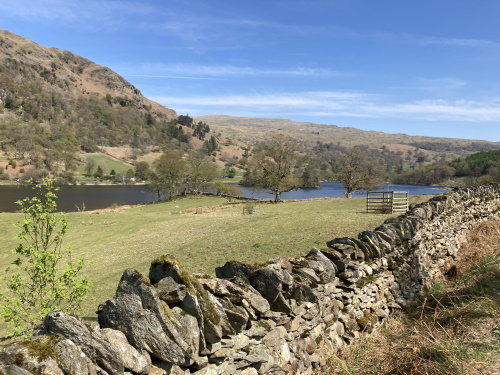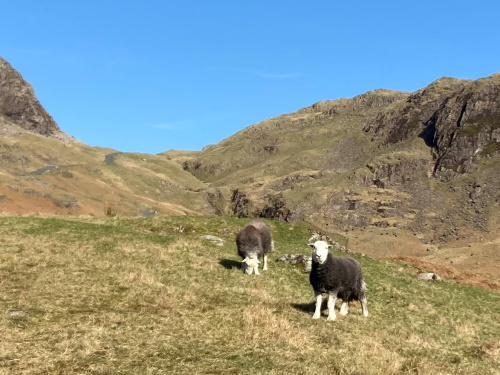Blog WHS Visits
WHS #783: Lake District
Although I have visited almost all West European WHS, two easy sites across the Channel had become virtually inaccessible during the Covid years. One of those is the English Lake District, an annoying miss as the site is visited by millions of tourists yearly and is also comfortably in the top 20% of most visited by our community. The best time to visit the Lake District is when it doesn’t rain and when there are no school holidays. I was rather lucky with 2 sunny weekdays in mid-April, though I did catch the final days of the Easter holidays.
As the size of the Lake District and the lack of clear focus of the WHS is a bit intimidating, I decided to allocate 2 days to it. Fortunately, near-local Solivagant suggested two driving routes. On the first day, I drove South to West, from Ambleside to Sellafield. I actually started a bit north of Ambleside, at Rydal Water. Here you can do the Lake District in a nutshell: the easy 1.5-hour hike around the lake will deliver lake views, dry stone walls, some sheep, and bare hilltops. Rydal Hall, a large country house, features the “Quiet Garden” with reference to the Picturesque period. The area is quite touristy, and people were sunbathing at and swimming in the lake.
I then drove on to the west, using the Hardknott Pass. This is England’s steepest road – and narrow it is as well. Fortunately, you can see approaching cars coming from afar. I found the drivers very accommodating: officially, the ascending cars have priority, but in practice, everybody tries to get out of the way in one of the many roadside bays. At a plateau just beyond the top of the pass lies Hardknott Fort, the impressive ruins of a Roman fortress. A couple of Herdwick sheep roamed around as well. The driving and the scenery have slight similarities to the Silk Road, but the road between Ambleside and Eskdale is only 27 km long and the top lies at just 393 meters altitude.
On the second day, I drove North to East, from Cockermouth (where I had been staying overnight) to Keswick. The overcrowding and lack of parking were more of an issue here, and a number of parking lots could only be paid for with pound coins (which I did not have).
I did enjoy my morning though, when from a small free car park at Crummock Water I hiked past fields of bluebells that were just starting to blossom (early May would be the best bet here) uphill to Rannerdale Knotts. This “fell” is one of the 214 peaks in England known as the “Wainwrights”, named after an author who described all of them in cute little books in the 1950s and 1960s. The path here slowly ascends, it’s a medium-level hike of about 2.5 hours / 8km return. I did only make it to the second hump of the mountain ridge: severe winds prevented me from pushing on towards the peak. The local sheep didn’t seem to be bothered by the gusts.
Two topics cannot be left undiscussed regarding this WHS: the District’s natural values and its OUV. In the week before my trip, I had been reading The Wild Places by Robert Macfarlane, where the author searches for “genuinely wild places” in Great Britain and Ireland. There’s a short passage on the Lake District as well: he climbs the Red Pike near Buttermere in mid-winter. He describes the value of the Lake District “as though it had been loved into tameness by its millions of visitors”.
I never got a grasp on the site’s OUV either. It wasn’t discussed at the WHC, as ICOMOS favoured inscription as a cultural landscape already since its first proposal in 1987 and the site was a shoo-in in 2017. The UK used a combination of 3 arguments to substantiate its claims, as in “the only site that has a blue roof, a red fence ánd a yellow front door”. I’ve tried hard to summarize its apparent values in one clear sentence but failed. The site seems to have the greatest importance for the UK itself, for its artists, and for the development of its park service. What remains for others to enjoy is mostly criterion vi, the romantic associations with a pretty, manicured landscape.
Els - 24 April 2022
Comments
Jay T 24 April 2022
Robert Macfarlane is a fantastic author to read when journeying through the UK’s great outdoors. I quite enjoyed his book Landmarks, which made it into the top favorite books I read last year. Glad you had such amenable weather for your travels in the Lake District!


